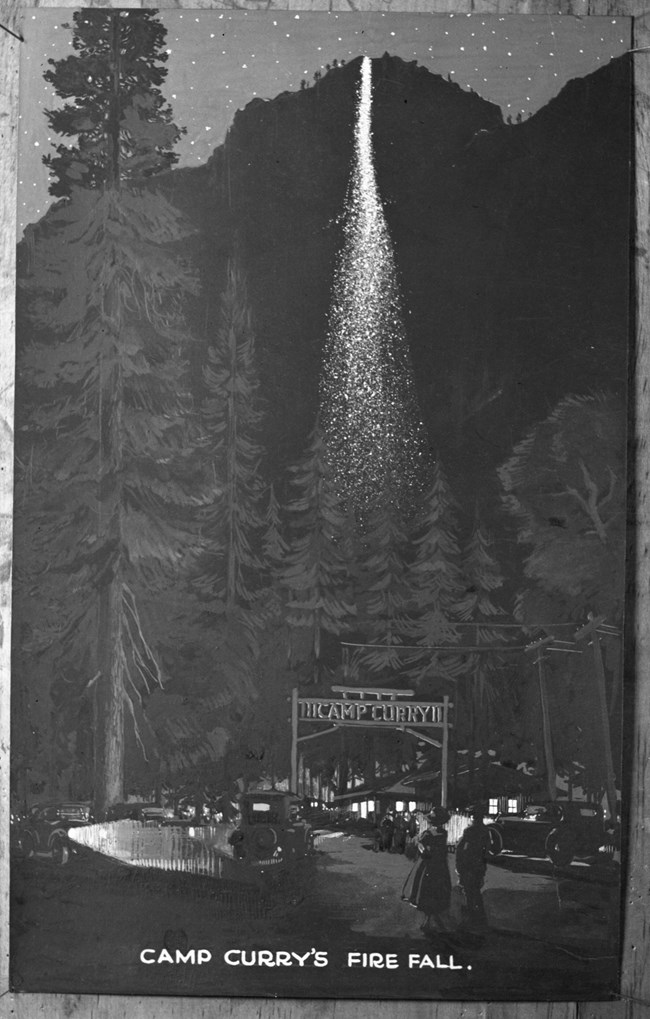
Let’er go, Gallagher!” The call rang through Camp Curry and up the valley walls. The sun had already set on a day full of hiking, swimming, biking, climbing, or just relaxing by the streams. Now, thousands of eager eyes looked toward a fire burning on the clifftop, ready for the avalanche of flames and embers. Some of the Yosemite visitors had traveled hundred of miles for this very moment. With a final push, the bonfire tumbled from the cliff, streaming flames behind like a burning waterfall. For 89 years, the clifftop was a nightly Yosemite tradition. Begun by James McCauley in 1879 and continued by Camp Curry until 1968, the spectacle was a major attraction, enticing thousands of visitors to stay overnight in Yosemite lodging. It was just one of many amenities and activities park concessioners created to draw visitors. In the early years of Yosemite, the many concessioner companies competed for customers by offering unique recreation opportunities. These activities continue after the Yosemite concessioners were consolidated into the Yosemite Park & Curry Company in 1925. As the goals of the National Park Service evolved, so too did recreation in Yosemite. Early efforts to transform the Wawona and Sentinel Hotels with luxury resort amenities were challenged by emerging conservation standards. The park’s popularity required new techniques to relieve congestion and for visitor (and wildlife) safety. Increasingly, the National Park Service and travelers focused on recreation that highlighted the natural landscapes. Concessioners adapted too, and now maintain recreational facilities, offer guided activities, and rent gear for a wide range of adventures. Today, just as it was for the first Yosemite visitors, the most popular activity is enjoying the spectacular views. Within that beautiful landscape lies bountiful opportunities and challenges. 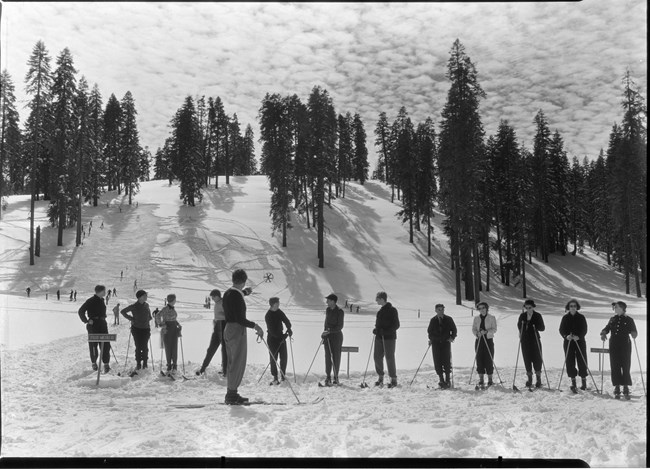
Wilderness RecreationYosemite concessioners facilitate recreation beyond resort grounds and facilities as well. Over the years, the National Park Service and park visitors increasingly focused on recreation opportunities found in the natural environment. As infrastructure like bowling alleys and toboggan runs lost support, outdoor sports and wilderness exploration became more popular and more accessible. Yosemite’s concession services, today primarily managed by Aramark, rose to meet this demand. Visitors today can rent equipment, embark on guided expeditions, and take lessons from experts for a wide variety of outdoor activities. These opportunities provide travelers the chance to experience Yosemite in a new way and fosters deep connections to the natural world. The Yosemite Mountaineering School & Guide Service began in 1969. Like the Yosemite Ski School, it connects travelers of all skill levels to outdoor recreation. Expert climbers, cross-country skiers, and hikers pass on their knowledge and skills to those just starting out and those working to advance their proficiency. Rafting and horseback riding trips are also available, continuing these strong Yosemite traditions. Whether a once-in-a-lifetime experience or the beginning of a life-long avocation, these classes help people gain confidence in the outdoors and deepen their appreciation for nature and conservation. For those who prefer to adventure on their own, Yosemite concessioners also rent equipment for nearly every outdoor interest. These services broaden public access to nature, allowing visitors to try a new sport, explore an emerging passion, and explore far from home. These experiences introduce, or deepen, our appreciation of the environment. With these connections, travelers can better understand their role in conservation and become advocates for the national parks. EducationConnection to Yosemite comes in many forms, from wilderness adventures to quiet evenings by the lodge fireplace. Since before the first stage rumbled into Yosemite Valley, the natural and human history of the park has fascinated travelers. Early park visitors learned about Yosemite from hotelkeepers and artists, and gathered for stage drivers' stories. Today, in addition to ranger programs,park museums, and visitor centers, Yosemite Hospitality (Aramark) offers art classes, kids’ programs, naturalist walks, history tours, and more. StoryMapHistoric Video Footage
Continue the Story of Concessions in Yosemite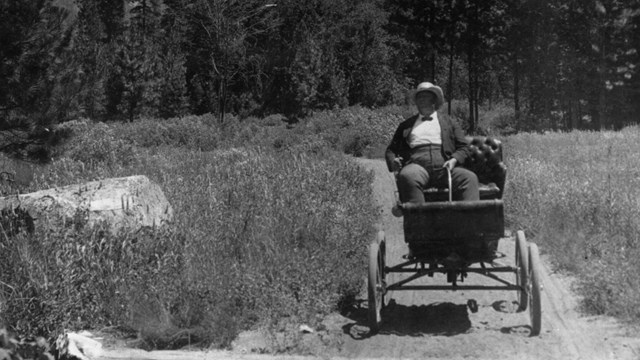
Transportation
Park managers and concessioners recognized the connection between reliable, accessible transportation and Yosemite’s success. 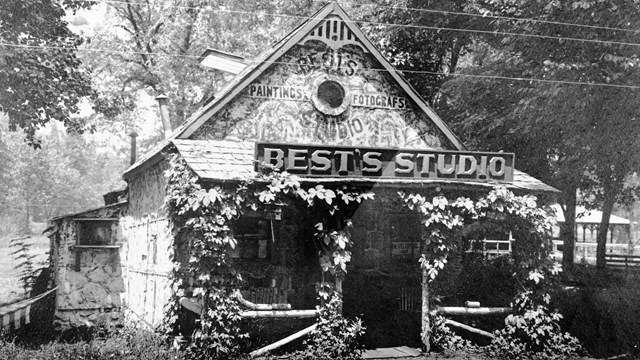
Art
Basket makers, dancers, photographers, painters, and artists of all kinds shared their visions of Yosemite with the world. 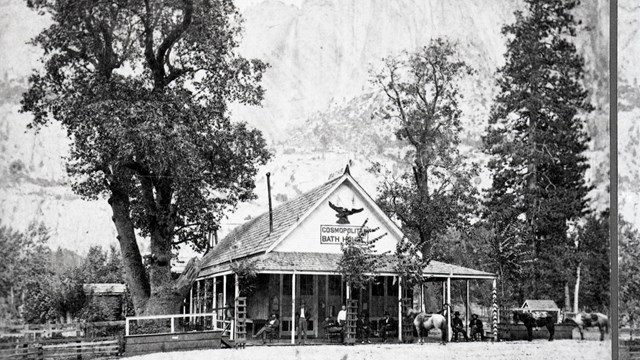
Lodging
From rough cabins to historic resorts, Yosemite has hosted an array of overnight accommodations. 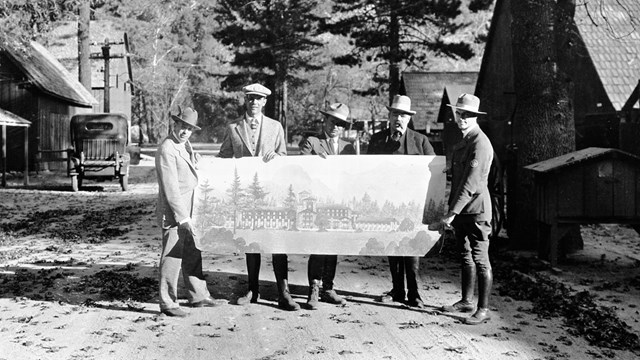
Concessions History
What are concessions and why are they so important to the history of Yosemite? |
Last updated: October 1, 2024

